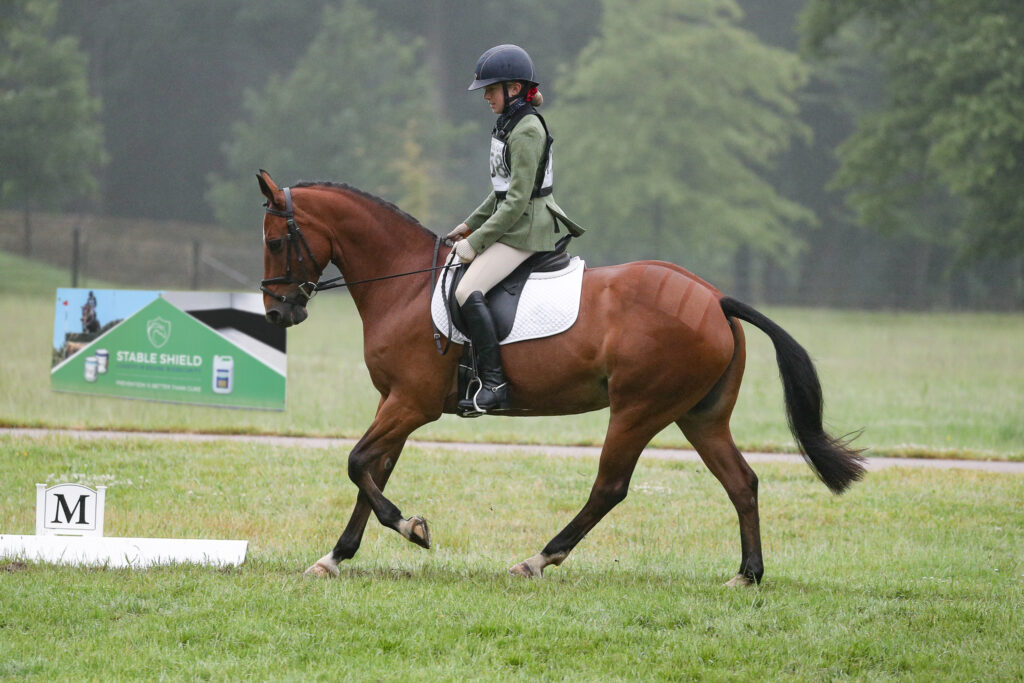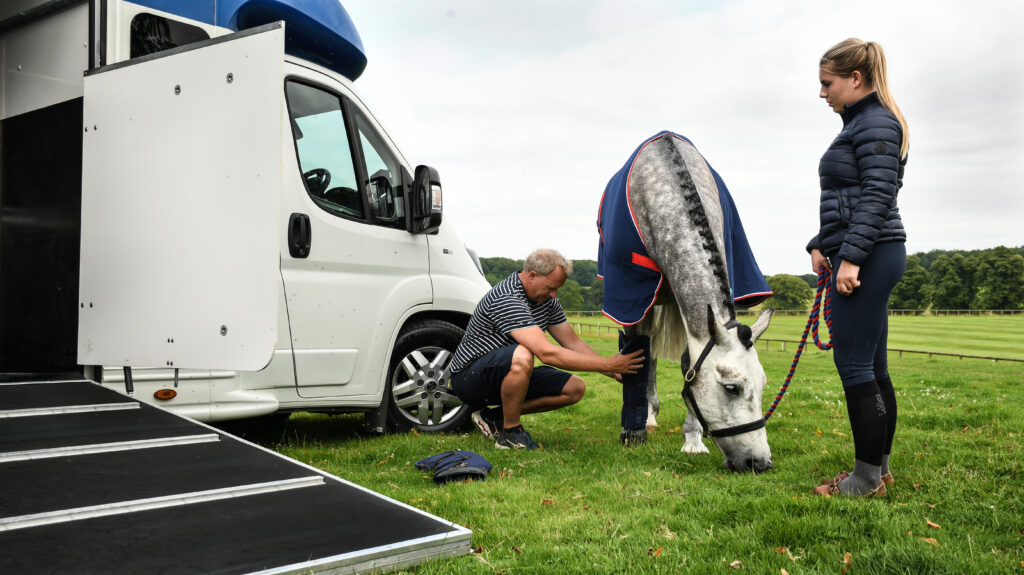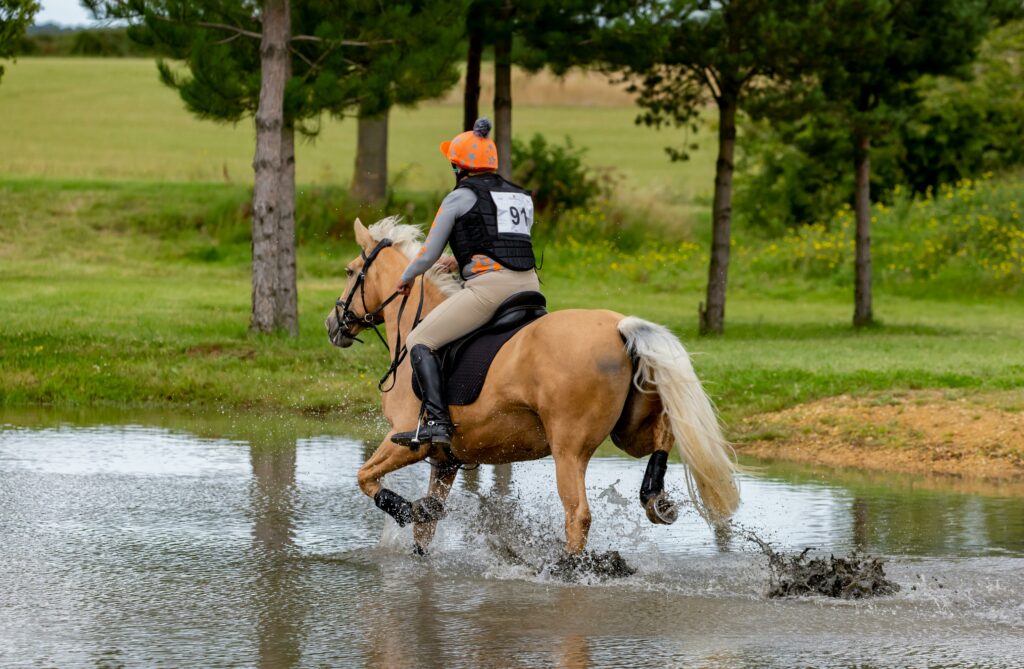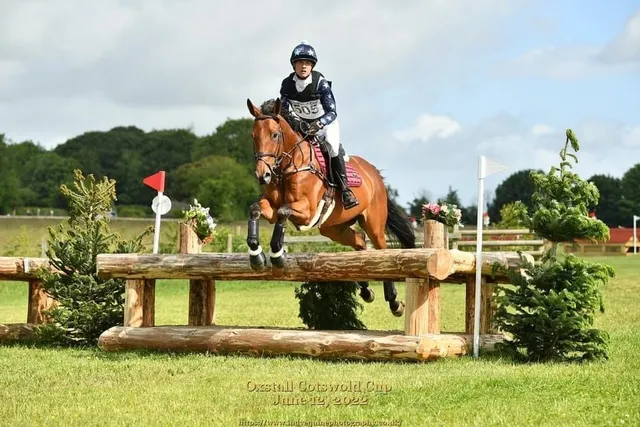The PRB HORSEBOXES Cotswold Cup
COMPETITOR HUB
Welcome to the Cotswold Cup Competitor Hub – your one-stop resource for everything you need to prepare for the 2025 PRB Cotswold Cup Championships.
Whether you’re looking for expert advice on feeding and conditioning your event horse ready for their first 3DE, tips on rider fitness and nutrition, or practical guidance to help you perform at your best, this page brings together a wealth of knowledge to support you every step of the way. From training insights to wellbeing essentials, we’ve curated content to help both horse and rider stay fit, healthy, and competition-ready.
10 top tips for preparing for your trot ups...
BIOSECURITY - WHAT TO THINK ABOUT AT A STAY AWAY EVENT?

By Stableshield
Biosecurity and measures to put in place when travelling
Biosecurity are the protocols that you put in place to reduce the risk and spread of infection. When attending shows and competitions, it is important that everyone helps prevent infections by following a good biosecurity routine prior and during the show/competition.
Prior to and leaving for a show/competition
It is important that your horse is healthy before attending a show. You will know your horse best and if something is out of character it is best to speak to a vet. More physical signs include a fast heart rate, high temperature, discharge from the mouth or nose, weeping at the eye, lack of appetite, pain or swelling at the throat, loss of body condition etc.
Make sure all your horses’ vaccinations are up to date. Some shows/competitions may have particular rules around this, so it is best to check.
Bring your horses passport with you to the show as this is a requirement.
Ensure your lorry/horse transport is thoroughly disinfected prior to travel. If possible, avoid sharing transport with any other horses especially if they come from a different yard.
Take your own water buckets, water and hay to ensure you are not sharing these with others at a show and cross contaminating.
During a show/competition
If you are using overnight stabling, ensure that you spray the bedding with disinfectant. All stables should be thoroughly sprayed with disinfectant prior to your horse entering.
Do not share grooming equipment with others, if you need to for any reason, ensure that you thoroughly disinfect prior to use.
Prevent your horse coming into contact with another horse where possible and avoid grazing where other horses have been.
Use your own water buckets, water and hay when at a show (where possible).
After a show/competition
Clean and thoroughly disinfect your horse transport, grooming equipment and water buckets.
Monitor your horse’s behaviour & temperature closely for the next 14 days to ensure they have not picked up any infections during their stay away.
Security measures at stay-away shows

From KBIS
Heading off to a stay-away show involves a lot of preparation. There are so many things to think about, and whilst security might not be top of your list, it should feature highly amongst the buckets, rugs, tack etc. (and that’s just for your horse!). Keeping you, your horse, your belongings and those around you safe should be a priority. Here are some ways you can put safety first at a stay-away show.
How to keep your tack safe
Sadly, most equestrians have heard about tack thefts. As a result, a lot of people in the horse world are looking for ways to deter thieves and make sure their tack is as safe as possible when they are staying away from home for a show, training or camp.
Before you leave home, consider data tagging your tack so that it’s marked with a unique fingerprintenabling it to be identified as yours and only yours.
Often, people keep their tack in a tack locker whilst they are out and about away from home. This is a popular choice as everything is in one place and portable tack lockers make getting all that you need down to the stables nice and easy. Consequently, the downside of a locker is that it makes it quite straightforward for thieves to identify where tack is likely to be stored and therefore where to try their luck at gaining access. It may be worth moving your tack inside your lorry, rather than leaving it in external lockers.
Some ways to make your external tack more secure in a tack locker and deter thieves might include:
- Using a battery-powered audible alarm in your locker and signage externally to explain this is in place. You could also put an alarm in the living if your tack was moved here and you were sleeping elsewhere.
- Consider changing the lock on the locker and external living door. Some locks fitted by the manufacturers are fairly generic, therefore someone else’s key may fit and work to open it.
- Padlock your ramp, for the reasons above.
If you are using a portable tack locker, whether it’s being kept in your lorry/trailer or down at the stables, there are some extra considerations:
- Secure your portable locker to the floor or to your stable, so the whole thing cannot just be picked up and taken.
- Also secure a chain around the doors so even if the lock is accessed, the doors will not open for the tack to be taken.
Many of the suggestions above are with insurance in mind. For Tack insurance with KBIS, there must be sign of forcible entry or exit in order for a claim to be paid. This means that in the event of a tack locker or lorry/trailer being unlocked and your tack being stolen it would not be covered. Following the above suggestions will likely make you less of a target for thieves. Plus, it will demonstrate to insurers that every possible precaution was taken to keep the tack safe in the event that it is stolen and a claim needs to be submitted. Although you are away from home, make sure you still follow any security requirements stipulated by the insurer so that you are covered if the worst happens and your tack is stolen.
In addition, be vigilant about not leaving equipment on the ramp or next to your lorry or trailer whilst you are untacking or popping inside the lorry for anything. These instances would not meet terms for a claim to be paid as there would be no evidence of forcible entry or exit. Similarly, it would not be covered if your tack is inside the lorry but the back ramp is not locked and is dropped allowing access without forcible entrance or exit, so make sure you have all possible precautions in place at all times.
If this has got you thinking about insuring tack that isn’t already covered, it’s worth checking if your home insurers cover this under ‘sporting goods’. If they don’t, or the cover offered isn’t sufficient, you can either add tack cover onto a Horse insurance policy with KBIS or take out standalone tack cover through our Property team.
For the purposes of the insurance, keep hold of receipts when new tack is purchased and consider asking your saddle fitter to note down an approximate current market value of your tack when they visit for their annual saddle fit checks. As the cover provided is market value at the time of loss, rather than new for old cover, this helps to support the valuation of any stolen tack is worth which can be tricky to do retrospectively.
Now, it’s not just tack to think about…
How to keep your trailer and horsebox safe at stay-away shows
If you are taking your trailer to a stay-away show with you, when parked up, secure it with a hitch lock or wheel clamp. You can also data tag your trailer in advance of the show to mean it can be identified as yours.
When going away in a horsebox, it’s simple but really important to keep all entrance points locked at all times, that’s the driver’s side door, passenger door, external living door and the ramp(s).
On arrival, make sure you park up with enough space around you to tie your horse to the side if needed and allow for those on either side of you to do the same. Whilst your horse will spend most of their time at the stable, having room to tie them up to the trailer or horsebox briefly on arrival or when you are almost ready to leave will be handy.
Whilst not directly needed whilst staying at the show, ensuring you have adequate Breakdown cover before setting off is important. Should you break down on route to or from the show, having cover that will include transporting your horses home again is invaluable.
What else should I consider before heading to a stay-away show?
Think safety first. Your horse won’t be used to the environment, so be sensible when leading him around throughout the show. Give your horse time to take it all in and allow longer to warm up to account for this.
Make sure you have adequate Public Liability insurance in case your horse gets away from you and causes an incident that involves a third party (i.e. someone that’s not involved in the show). These types of claim, which include both third-party bodily injury and property damage, can settle for millions of pounds, so it is vital to have adequate insurance in place to protect yourself.
Lastly, just enjoy it and have fun! Head home with pricked ears and a smile. That’s what it’s all for.
From ONE day to THREE dayS

Plan ahead with SPILLERS as you make the transition to long format eventing!
Preparing Your Horse for Stabling at Events
Many horses spend the summer months living outdoors, so it’s important you plan ahead so they’re adjusted to eating forage, not just grass, and being in a stable ahead of the event. Sudden changes in routine can add unnecessary stress and compromise digestive health, especially when they’re already facing new environments, unfamiliar stables, different grazing routines, new stable mates, new water sources and a busy atmosphere. Simulate the event routine at home in advance to help your horse be ready for his stay away.
Familiarity and Comfort
Use equipment your horse is accustomed to. Some horses are sensitive to unfamiliar equipment, and having their regular items can help them feel secure and relaxed, now is not the time to give them new buckets, or even crinkly new rugs (my old horse used to hate rugs fresh out of the bag). If your horse is a worrier away from home, consider contacting the event organizers in advance to request a stable at the end of a row, away from heavy foot traffic, or one with a view if stabled in a barn. These small considerations can make a significant difference in your horse’s ability to relax and perform at their best.
Choosing the Right Feed
Horses competing in long-format, three-day events require weeks of fitness and preparation. Some may lose weight as their workload increases, which may be beneficial for good doers but problematic for horses prone to becoming too lean. Forage and grazing should form the foundation of a horse’s diet whenever possible, so for those in hard work you can often provide them with as much forage as they’re willing to eat. Adjust hard feed rations to offset increased calorie needs as you go along. Feed choices will depend on the individual horse: “hot” horses generally benefit from high-fibre, high-oil, low-sugar, and low-starch feeds like SPILLERS ™ Stamina+ Cubes or SPILLERS ™ Ulca Fibre. More laid-back horses may do better on SPILLERS Performance Mix for extra sparkle. If your horse maintains weight and energy well don’t be tempted to over feed which could lead to weight gain, a diet such as SPILLERS ™ Original Balancer and SPILLERS ™ Fibre Lite Molasses Free can provide the necessary nutrients without excess calories. Speak to a nutrition specialist in advance to make sure you’ve got them on a balanced diet with sufficient nutrients for their increased workload, especially if they are prone to clinical conditions such as gastric ulcers.
Feed Preparation and Consistency
Ensure you take enough feed for the duration of the event, plus a little extra in case of unforeseen circumstances. Some owners prefer to pre-portion meals into labelled tubs or bags, while others bring full bags of feed and supplements to prepare meals on the go. Both methods are fine, as long as you have sufficient supply. During the event is not the time to make sudden changes to your horse’s diet so don’t be tempted to try something new at last minute, all feeds and supplements should be tried and tested at home beforehand as part of your preparation. Make sure you allow time in the day for plenty of hand grazing, so they have time doing what horses enjoy best!
Supporting Performance and Recovery
Competing over several days is of course more demanding than a single-day show, however, if their fitness work and feed regime are well established beforehand, they should cope well. Horses in harder work need extra nutrients to support their training, recovery and muscle health. Feeds such as SPILLERS ™ Perform & Restore Mash or the feeds already mentioned contain amino acids (quality proteins) to aid muscle performance and recovery.
Tasty mashes can be particularly useful at events or during hard training as even mild dehydration can significantly impact performance. Even if your horse drinks well, mashes can help increase fluid intake. If your horse is reluctant to drink, adding a small amount to their water can create a tempting “soup” that encourages drinking. While apple juice or similar flavourings might entice some horses, it’s best to stick to BETA NOPS® approved feeds and supplements during competitions to help reduce the risk of positive tests for prohibited substances. Ensure your horse has access to clean, fresh water throughout the event and don’t forget to offer them a drink in the 10-minute box.
Don’t forget electrolytes!
Electrolytes are vital for nerve transmission, muscle contraction (including the heart), water movement, and pH balance. Sweating increases electrolyte losses – the main ones being sodium, potassium & chloride. Horses in light work usually only need a salt lick, but those sweating heavily require extra supplementation.
Estimating sweat loss is complex – factors include exercise, temperature, humidity, temperament, and fitness. Forage is high in potassium so table salt (sodium + chloride) is usually sufficient for most UK horses. For most horses, adding up to 2 tablespoons of salt to the feed will supply enough elecrolytes, but the amount of extra salt needed depends on base diet. If unsure consult a nutritional specialist for tailored advice.
- Tips: Provide access to a salt lick, introduce salt gradually, monitor urination/drinking, always provide fresh water, if adding electrolytes to water always offer plain water too, mask the taste if needed, avoid electrolyte pastes for ulcer-prone or dehydrated horses, and seek expert advice for regular sweaters.
Take Home Message:
Excellent nutrition doesn’t make up for poor fitness and training, but excellent performance is underpinned by good nutrition. Be organised, keep your horse happy and no doubt this will help them to perform at their best throughout the three-day event. Good luck from all at Team SPILLERS and do come and see us while you’re there!
Keep checking back, we’re updating this page all the time…
https://www.instagram.com/reel/DNix_hDK-xc/?utm_source=ig_web_copy_link&igsh=MTV3N29rMXhzZnhpcQ==












